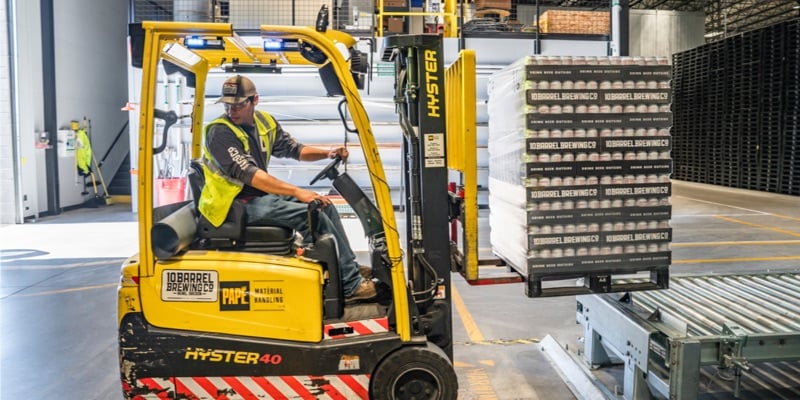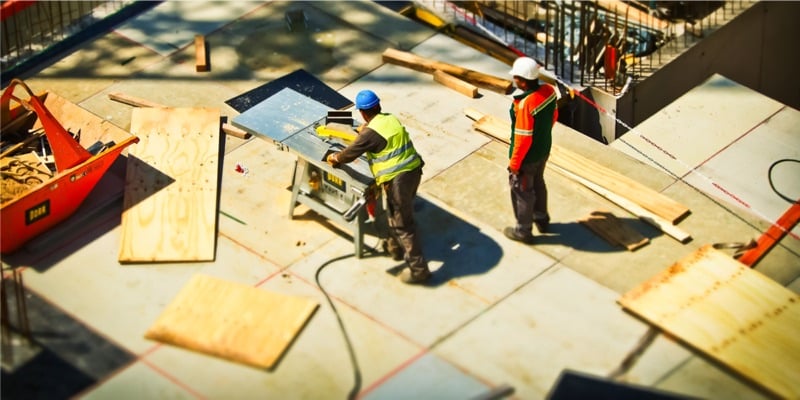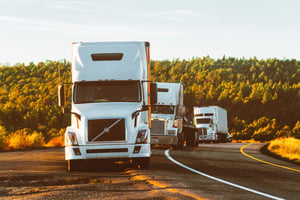 We're all about saving you money on your Commercial Truck Insurance, but there's one step you can take that goes beyond just lowering your insurance costs - a commercial truck maintenance schedule. We understand that most truck drivers and fleet owners face challenging delivery schedules and don't have a lot of time on their hands.
We're all about saving you money on your Commercial Truck Insurance, but there's one step you can take that goes beyond just lowering your insurance costs - a commercial truck maintenance schedule. We understand that most truck drivers and fleet owners face challenging delivery schedules and don't have a lot of time on their hands.
But time spent on regular truck maintenance can help save time in the long run, reduce frustration, lower costs, and increase safety. Here's how!
Fewer Breakdowns
Even minor issues can cause truck breakdowns if ignored, and small issues can quickly become more significant - causing more downtime and higher repair costs - if not addressed immediately. Taking time to make a repair when it is discovered helps keep your truck moving. A breakdown on the road can be dangerous to the driver and can cause late shipments.
Higher Customer Satisfaction
An unexpected breakdown can cause late, inconsistent, or unpredictable delivery times that may force businesses to look at another trucking company that delivers consistently and on time. Regular truck maintenance results in fewer breakdowns and more reliable deliveries.
Safer Trucks/Fewer Accidents
The weight, height, and size of trucks make them more dangerous than smaller vehicles. Trucks need more time to stop, have larger blind spots, are more likely to roll over, and can cause more damage than a smaller vehicle. According to the National Safety Council (NSC), in 2019, 5,005 large trucks were involved fatal crashes, and 118,000 were involved in accidents that resulted in an injury. Furthermore, the NSC reports that while large trucks accounted for only 4% of all registered vehicles and 7% of total vehicle miles traveled, they accounted for 10% of all vehicles involved in fatal crashes in 2019.
Regular maintenance helps make trucks safer. For example, braking deficiencies will sometimes allow a truck to stop during routine driving situations but may fail in an emergency when hard braking is required. Safer trucks lower the risk of accidents and make our roads safer for all drivers
Lower Operating Costs
Maintenance schedules help improve your bottom line in several ways.
- More minor repairs – which can be caught during a maintenance check – are typically less expensive than major repairs.
- Well-maintained trucks can lower fuel costs.
- Fewer accidents mean lower insurance costs.
- Late shipments caused by unexpected breakdowns can lead to the loss of customers.
Compliance With Regulations
The Federal Motor Carrier Safety Administration (FMCSA) states, "the motor carrier must either inspect, repair, maintain, and keep suitable records for all vehicles subject to its control for 30 consecutive days or more, or cause another party to perform such activities. The motor carrier is solely responsible for ensuring that the vehicles under its control are in safe operating condition and that defects have been corrected."
Having a Commercial Truck Maintenance Schedule helps ensure that you are following FMCSA regulations.
How to Create a Commercial Truck Maintenance Schedule
Metalphoto of Cincinnati offers tips to establishing an effective preventative maintenance program that includes the following:
- What you need to implement a fleet preventative maintenance plan
- How to establish a baseline
- How to determine maintenance intervals
- Advice on fleet maintenance software
- A preventative maintenance service checklist
- How to develop a driver inspection and reporting system
- How to track metrics and monitor for success
How to Save Even More on Commercial Truck Insurance
Don't stop with a maintenance schedule if you want to save even more on commercial truck insurance. Work with an insurance agent who understands your unique risks and challenges. American Insuring Group has been helping truck and fleet owners with their Commercial Truck Insurance needs for years. And, as independent agents, we check with multiple insurance companies to get you the lowest price.
Give us a call at (800) 947-1270 or (610) 775-3848, or connect with us online.



 Certain types of
Certain types of  Pennsylvania law
Pennsylvania law Construction sites are filled with hazards/risks that cause injuries and fatalities, increasing both direct and indirect costs, such as lost workdays, lower employee morale, and higher
Construction sites are filled with hazards/risks that cause injuries and fatalities, increasing both direct and indirect costs, such as lost workdays, lower employee morale, and higher  For many restaurants, creating an outdoor seating area became a necessity during the COVID restrictions. According to the
For many restaurants, creating an outdoor seating area became a necessity during the COVID restrictions. According to the  If you own a fleet of trucks, are an independent truck driver, or use trucks for business, you need
If you own a fleet of trucks, are an independent truck driver, or use trucks for business, you need  The more accidents you have in your kitchen and the more claims you file, the higher your
The more accidents you have in your kitchen and the more claims you file, the higher your  One way to reduce the cost of
One way to reduce the cost of  Ask any good insurance agent how to lower
Ask any good insurance agent how to lower  Certain types of
Certain types of 



